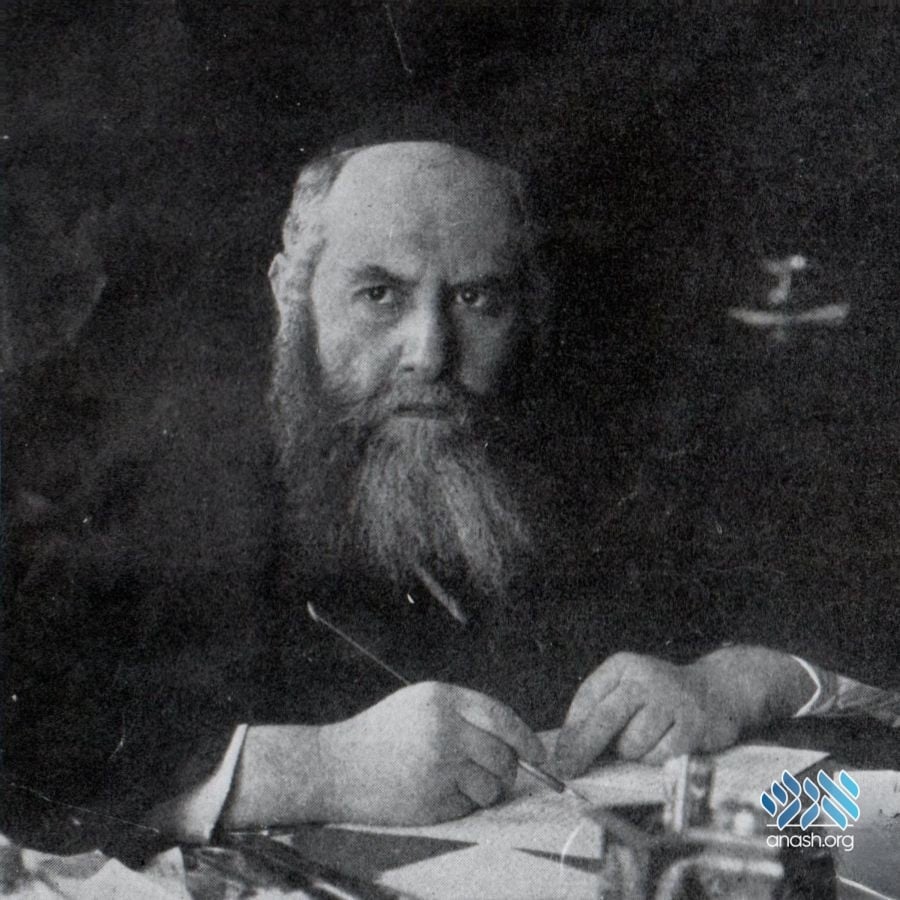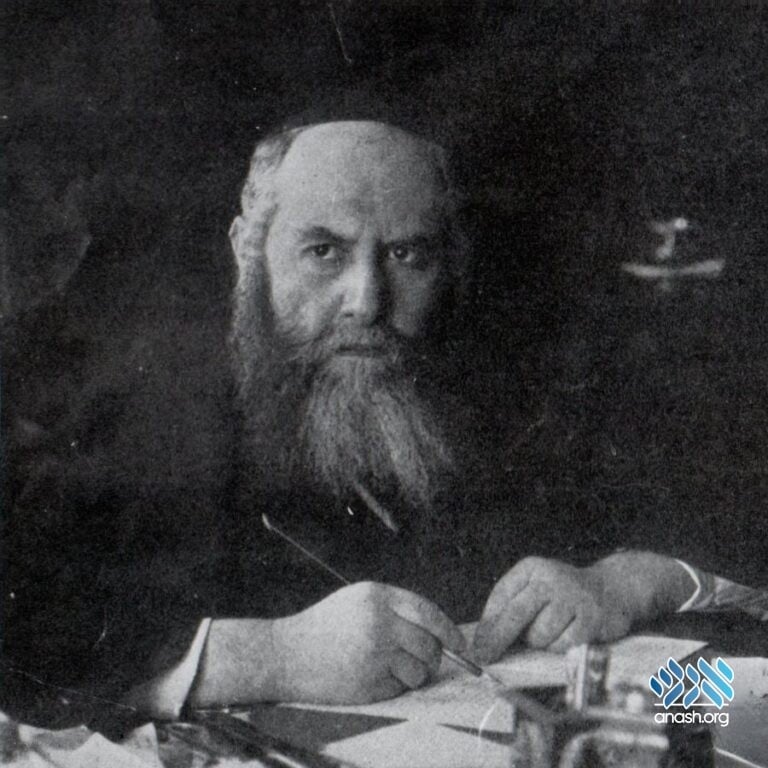ט׳ אב ה׳תשפ״ד | August 12, 2024
“Where is the Jewish Bravery, the Jewish Flag?!”
In a heartfelt letter to Rebbetzin Chaya Mushka, the Frierdiker Rebbe describes the tragedies that occurred on Tisha B’Av throughout Jewish history, and how once again the Jewish people are being tested by those pretending to be their friends.

In a heartfelt letter to Rebbetzin Chaya Mushka, the Frierdiker Rebbe describes the tragedies that occurred on Tisha B’Av throughout Jewish history, and how once again the Jewish people are being tested by those pretending to be their friends.
By Anash.org writer
In the year 5679 (1919), during the days leading up to Tisha B’Av, the Frierdiker Rebbe penned a heartfelt letter to his daughter, Rebbetzin Chaya Mushka. In it, he describes the deep bitterness associated with Tisha B’Av, a day that has seen tremendous suffering and tragedy throughout Jewish history.
The Rebbe began by recalling the first tragic event on Tisha B’Av, over 3,200 years ago, when the spies returned from scouting Eretz Yisroel and delivered their slanderous report. The people’s faith faltered, leading to weeping and mourning, which marked the beginning of the sorrowful nature of Tisha B’Av.
The Rebbe also reflected on the destruction of the First Beis HaMikdash in 3338 from creation, and the untold suffering that followed. Hundreds of thousands of Jews were killed, and their bodies lay scattered in the streets. Even when the Jews returned to rebuild the Second Beis HaMikdash, it was a time fraught with difficulties, as the Jews were often at odds with each other and under the rule of foreign nations.
He lamented how, throughout history, Jewish communities had often been led astray by outside influences. These influences sowed discord and led to terrible consequences, such as the destruction of the Second Beis HaMikdash. The Rebbe pointed out that it was the internal strife, driven by young Jews who had adopted foreign values, that brought about the ultimate downfall.
Despite all this, the Rebbe emphasized the enduring strength and resilience of the Jewish people. Even in the darkest of times, such as during the Inquisition, Jews held fast to their faith, teaching their children Torah and instilling within them a deep and abiding connection to Hashem.
The Rebbe expressed his anguish over the current state of affairs, drawing parallels between the present and the past. He saw that once again, the Jewish people were being tested by those who pretended to be their friends but were in fact leading them astray.
In his closing words, the Rebbe reminded his daughter, and all of Klal Yisroel, that Hashem has promised to transform Tisha B’Av into a day of eternal joy when Moshiach arrives. He urged them to remain steadfast in their faith and trust in Hashem’s promise of redemption.
May we merit to see the fulfillment of Hashem’s promise with the coming of Moshiach, speedily in our days.
*
To my beloved daughter,
“Tisha B’Av”—two small words that carry the weight of profound and immense bitterness.
“Tisha B’Av” represents a curse of suffering, blood, tears, mourning, death, and fearful cries, to the point where it’s hard to distinguish whether the vast ocean is greater in depth and expanse or if Tisha B’Av’s suffering and death are more severe.
The beginning of this wretched day, or more accurately, this dark day, began in the year 2449 from Creation (about 3230 years ago), when the spies who went to scout the Land of Israel returned (they left on the 29th of Sivan, were on the road for 40 days, and returned on Tisha B’Av) and delivered a false report about what they saw.
When the Jews left Egypt, due to the great miracles and divine manifestations they witnessed, a sizable group of Egyptians converted to Judaism. They are called “converts” (the true meaning of “convert” is “resident,” and they settled among the Jews) and they adopted all the practices of the Israelites. However, they caused much suffering for the Jews. All the troubles came from them, as they continually incited the people.
The nature of the Jewish people is that they believe and take pride in their faith and holy Torah. This led them to have a certain respect for these Egyptian converts (meaning “proselytes”). They were respected (similar to how today, if a person is secular but adheres to Jewish values and is not embarrassed by being Jewish, he is more admired than an actual brother who endures suffering with them. Even a stranger, like a Frenchman or an Englishman, might be admired even more. These opinions influenced the public. When the Jews left Egypt, they had a certain regard for these “converts,”) and their words and opinions took hold (and were received) among the people.
The Jews suffered from them, as they blended so thoroughly with the people that they became one with them, though their blood was Egyptian. Consequently, wherever they could, they brought the Israelites to the lowest state. Sometimes they lacked water, sometimes food, and they desired meat, showing discontent with the monn and seeking ways to embitter and disrupt Jewish happiness.
When the spies came and reported on the greatness of the land and the strength of its fortresses and people, the Jewish public had not yet figured out whether to mourn or rejoice. The “people” quickly started to incite rebellion, and on the night of Tisha B’Av, a mass outcry arose, declaring they preferred Egypt over the Eretz Yisroel, and began convincing others to return to Egypt.
Thus, Tisha B’Av was born from the troubles of Israel—a “gift” from the “good friends” of Egypt who had allied with the Jews.
The Jews of that generation paid for this “gift” with their lives for 39 consecutive years. On Tisha B’Av, they would go out into the fields outside the camp, a distance of one or two miles from where they cried, with their families, and dig graves for themselves. On the night of Tisha B’Av, they would lie in these graves, and in the morning, the living would leave, covering the dead with earth. For 39 years, 585,000 people died—those involved in the mass weeping.
In the year 3338 from Creation (about 2341 years ago), on Tisha B’Av, the First Beis Hamikdash was destroyed, and hundreds of thousands of Jews, including men, women, and children, were killed in various ways, and their bodies were rolled through the streets and fields like straw and wood.
Only after 70 years did Hashem return the Jewish people to Yerushalayim, and they began rebuilding the Beis Hamikdash (the Bayis Sheini). During this time, Jews had their own kings, though they were still under Roman rule, but the Eretz Yisroel was a kingdom in its own right.
For several centuries, some Jews sought connections in royal palaces and began to live lives of luxury and wealth. Initially, this was within the framework of religious behavior, but gradually they drifted further from the faith.
During the time of the Second Beis Hamikdash, the Jews were not at rest. It was not like the time of the First Beis Hamikdash, which was a time of true happiness for Israel. During the time of the Second Beis Hamikdash, many Jews were dispersed across different lands, suffering everywhere, here from one calamity and there from another.
More than anything, the Jews suffered from envy. All the nations envied Jewish moral life, the purity of Jewish family life, the mutual loyalty of parents and children, the purity and beauty that radiated from them, and their knowledge of the Torah in its purity, and the traditional Jewish education according to the Torah. Even philosophical knowledge and scientific knowledge were widespread among Jews, to the extent that even young children could articulate their opinions clearly and proudly on the highest scientific topics.
The Jewish family, even in places where it faced material pressure, did not let it affect their moral Jewish state. They had enough valor and talent. Parents rejoiced in their children, seeing them as tender, fresh, healthy, and blooming like flowers, and children took pride in their wise, healthy, and beautiful parents.
Hashem blessed them, and the Jews multiplied over time. The economy and agriculture continued to develop, but the youth began to yearn for a life of excess that aroused the envy of their neighbors, the Turks and Tartars.
The moral and material beauty of the Jews attracted the eyes of royal houses from Egypt, Rome, and other places, and the Jewish youth became involved in politics against the will of the older Jewish leaders.
Every historical global event starts with a seemingly trivial and small issue, like a spider’s web (the depth of Jewish culture provides extensive explanations for this).
One person made a feast and invited his good friend, but the servant mistakenly invited his enemy instead. He drove him away from his home. At the feast, there were wise men present, and the person who was turned away said that the wise men did not object to the host, and thus, their opinion must be the same as his. He went out in a storm of emotions and informed that the Jews refused to serve the king (the emperor).
At that time, there were already young people who had learned much from the gentile culture and began to spread their views among the masses with extensive explanations, claiming that the elders relied only on faith, while the masses should act with force and rely on their own strength to go to war and achieve independence.
In a short time, the young people managed to gather a public under the banner of “rebels” and took control of everything, even the leadership of the Beis Hamikdash, which was sacred and revered even by the nations (many distant countries and kings sent sacrifices, money, and gold as gifts to the Beis Hamikdash). At that time, it was managed by the Kohen Gadol, but the “rebels” took it over and appointed a Kohen Gadol from among their own.
To force the public to choose war, they burned all the grain, oil, salt, and wood supplies (enough for decades), and burned the houses, until famine and necessity led them to go to war against the wishes of the elders.
For eighteen years, the rebels maintained their alliance, and for several years they ruled Yerushalayim. Among the three leaders of the factions—Yochanan the Galilean, Eleazar ben Anani, and Shimon the Rebel—a civil war broke out. The great men of Yerushalayim were lost due to betrayal and confusion. They killed and shot countless people. In the Beis Hamikdash, as korbanos were offered, human blood was shed.
1400 treasures of all kinds were burned, and Shimon the Rebel killed all three of Amittai the Kohen Gadol’s children, and then himself.
Through one gate of Yerushalayim called the Kidron Valley, 115,808 corpses were taken out of Yerushalayim. In that war, from its beginning until the fall of Yerushalayim, 601,575 Jews fell in battle, not including those killed in the civil war of the rebels (as mentioned above).
In the month of Tammuz, they saw the first cracks in the wall. For three weeks, the rebels fought with the Jews (who wanted peace under the best conditions) and with their enemies. On Tisha B’Av, the enemy entered the Beis Hamikdash with noise and chaos, looted and destroyed, shedding blood of the elderly, youth, women, and children.
A few hours after midday, the Beis Hamikdash began to burn. The kohanim, servants of Hashem, seeing the disaster and the terrible decree, old and young, leaped into the fire with joy, like royal servants rushing to a grand parade, declaring: If Hashem has decreed such a bitter decree on His holy house, there is nothing more for His servants to do in His world. We too ascend to the heavens in the flames of the burning Beis Hamikdash. 80,000 young kohanim were burned along with the Beis Hamikdash, and the smoke of their burning bodies mixed with the smoke of the burning walls. Soon, the Beis Hamikdash was destroyed.
Seeing the pride of the Jews (children encouraging each other, parents slaughtering their children and then themselves, rather than falling into the hands of the enemy, who would surely force them to deny Hashem and His holy Torah), the enemies punished the Jews even more. They hanged 300 infants on tree branches, tied the elderly to horse tails, and thus killed tens of thousands of Jews.
Yet the Jews remained proud of their faith and holy Torah, and in the bitter and dark exile, they held on to the Jewish flag, the holy flag, with all their might. Nothing was too difficult for them for the sake of their Torah and faith.
The bravery of the Jews has been evident in every generation, despite the Inquisition and all the troubles.
The Jews have always kept their flag, strengthened the study of Torah for the young, and deeply instilled in their sweet and young hearts the sacred faith and good, fundamental behavior, and a constant memory of the burned kohanim and the Beis Hamikdash.
The current time, bitter and dark, gives us a proper understanding of Tisha B’Av, a day filled with weeping. The ‘Egyptian Jews’ of our time have ‘honored’ us again with a new Tisha B’Av, another disaster of the old, unforgettable troubles of Shimon the Rebel and his supporters, and fresh, warm blood lamentations on the pages of our blood-soaked history.
Our troubles are no smaller than the old ones; just like then, now too, our destroyers come from within us. We are paying a fair price in lives, in the honor of families—rachmana litzlan—but where are the brave, the burning kohanim, the hundreds of children who will speak openly and freely, declaring before all, without disguise, that we are Jews, we are Jews, and we remain Jews? Life and death are in Hashem’s hands, but faith is with us; He is ours, and we are His. We do not replace Him, and He will not replace us!
Where is the Jewish bravery, the Jewish flag?! Why are you hiding and being ashamed of your Jewish pride? Remember that the blood of millions of Jews shed across the lands flows through your veins, one Father to all of us, and we receive punishment together just because we are Jews. We walk blind from the “love” of those who present themselves as our friends and cultural advocates, showing us smiling faces, and because of them, we weaken our true, holy culture.
Let us not forget the givers of the dark and bitter gift of Tisha B’Av. They too were once “good friends” with smiling faces, and now tears do not leave our faces.
The bravery of Israel is complete and unimpaired; it is just subdued and diminished. Even our children are imbued with Jewish blood and steadfast in their faith, the essence of Yiddishkeit is complete. Therefore, we can hope not to be deceived by our false friends and place our trust in our holy Father, Hashem, who swore that if we observe the Torah and commandments, He will turn the day of mourning, Tisha B’Av, into an eternal joyous day, and Moshiach will come.
From your father, one of the millions of Jews who weep and await,
Yosef Yitzchak Schneersohn



In which volume can this letter be found?
volume 15, which contains all of the Frierdiker Rebbe’s letters addressed to the Rebbe and Rebbetzin
I just wanted to say thank you for putting this out! It is such a beautiful letter, and it’s hashgacha protis, because I found an old booklet of the rebbetzin from derher that I was reading ok Shabbos, and in it it mentions this letter and I was thinking that after Shabbos I would want to go check up the source and learn the letter, I didn’t get a chance to do it after Shabbos and then I already left the place I was for shabbos, so I didn’t have access to that booklet, beside I would have a hard time finding the source and actually learning it inside. Then all of the sudden my friend sent me this article and I couldn’t believe it! It was the exact letter that I wanted to go check up and learn! And not only that but it’s in English! For me this was a revealed Hashgacha protis, so thank you so much!